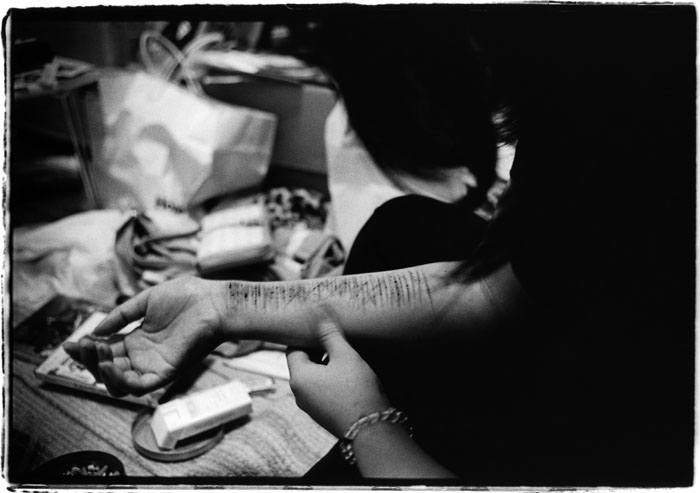
“Hey, I can not be here anymore, thanks a lot. bye”
2 o’clock at night, the cell phone receives a short message from Hiromi, saying she is going to commit suicide. She has taken 150 pills at once, but she could not die. After one hour, her family called an ambulance and she was driven to the hospital to be treated. Hiromi is 28 year-old. She is suffering from self-injury. She cuts herself when she feels anxious. She had family troubles when she was a kid. Her parents divorced and her father was deeply in dept. Mafia came to the house everyday to get money back. It was sometimes violent. These traumatic experiences have caused her mental illness. She was diagnosed with a borderline personality disorder.
Many of those people have had some traumatic experiences in their childhood including domestic violence, sexual abuse, etc…Others are grown up in families which are deeply in-dept, a very stressful situation for kids since mafia guys come to get money back everyday and threat their family. These traumatic experiences causing depression and other mental illnesses make these young people self-mutilate.
Self-injury is not only about “mental illness” but about the problems that Japanese society have been facing and hiding for long time.
Version francaise
Beaucoup de jeunes gens (en majorité des femmes) pratiquent l'auto-mutilation au Japon. Dans la plupart des cas, ces personnes ont été victimes de violences ou d'abus sexuels dans leur enfance. Ces expériences traumatiques engendrent des dépressions et d'autres maladies mentales qui entrainent l'auto-mutilation. Cependant, l'auto-mutilation reste un tabou pour la société Japonaise. Kosuke Okahara a suivi ces jeunes femmes dans leur isolement physique comme psychologique, un témoignage bouleversant mêlé de désespoir et de souffrances.

